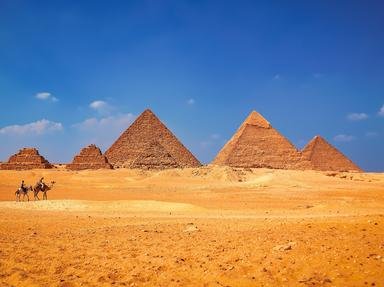Quiz Answer Key and Fun Facts
1. The verb 'attack' featured three birds of prey in a row, followed by a fist. The vulture started the word, but can you guess the identity of the other two?
2. Looking much like a sergeant inspecting the troops, the falcon that represented itself in the word for 'falcon' regally pinned an object under its wing. What was the bird clutching?
3. A seated and shrouded ibis holding an ankh, the symbol of life, appeared in the name of the god Thoth, credited with inventing writing. His name was also linked to two similar words, both descriptive of Thoth's function. Take a guess.
4. When the Egyptians put together the word for elephant, they used the sign for stability, the sculptor's chisel used in creating enduring works of art. Before the hieroglyph of an actual elephant that completed the word, a small bird stood its ground at the largest land mammal's feet.
5. A swallow was seen as a bird of bad omen. Together with a harpoon, it featured as an element of what painful word?
6. A pintail duck spread its wings to rise above the Nile, and was depicted in that form, appearing at the head of both a vulture and a quail. Those three birds made up the ancient equivalent of the modern 'time flies'. What span (or period) of time did they represent?
7. Both the words 'son' and 'daughter' included the hieroglyph of a goose. What was the connection between new family members born into this world and the goose?
8. Sensitive to the natural world around them, the Egyptians captured emotion by depicting a trussed duck, which represented ____ .
9. 'Those who belong to the world of the dead' were identified with another bird of prey, often seen circling over the western desert where the tombs were. That bird was exclusively associated with the feminine.
10. The guinea fowl hieroglyph was rarely depicted. Why was the bird so neglected?
Source: Author
sterretjie101
This quiz was reviewed by FunTrivia editor
bloomsby before going online.
Any errors found in FunTrivia content are routinely corrected through our feedback system.

